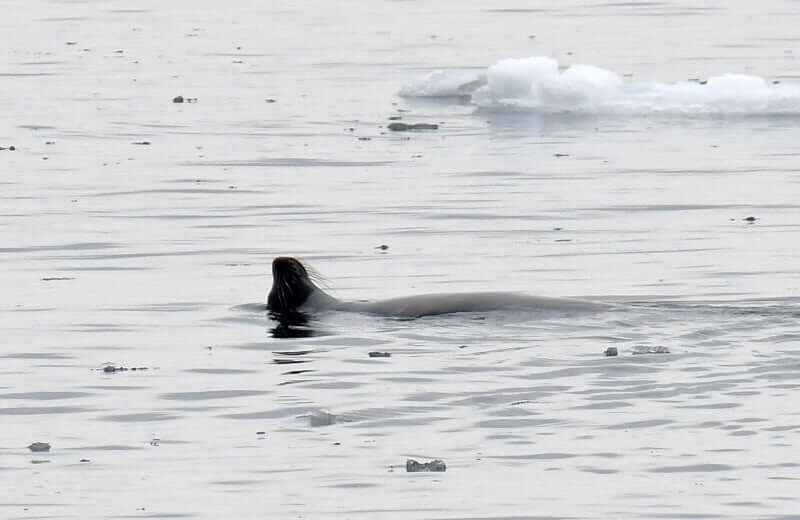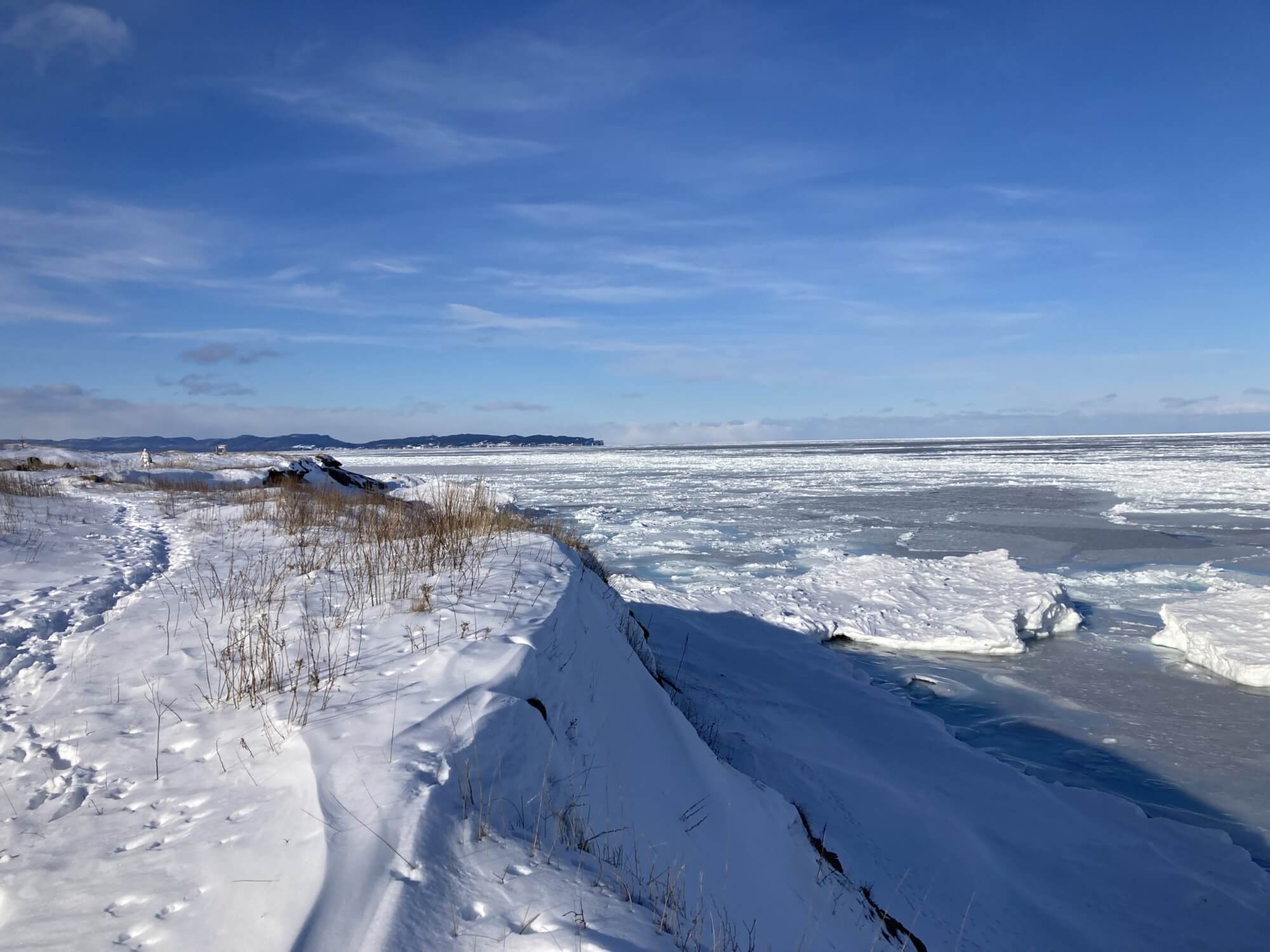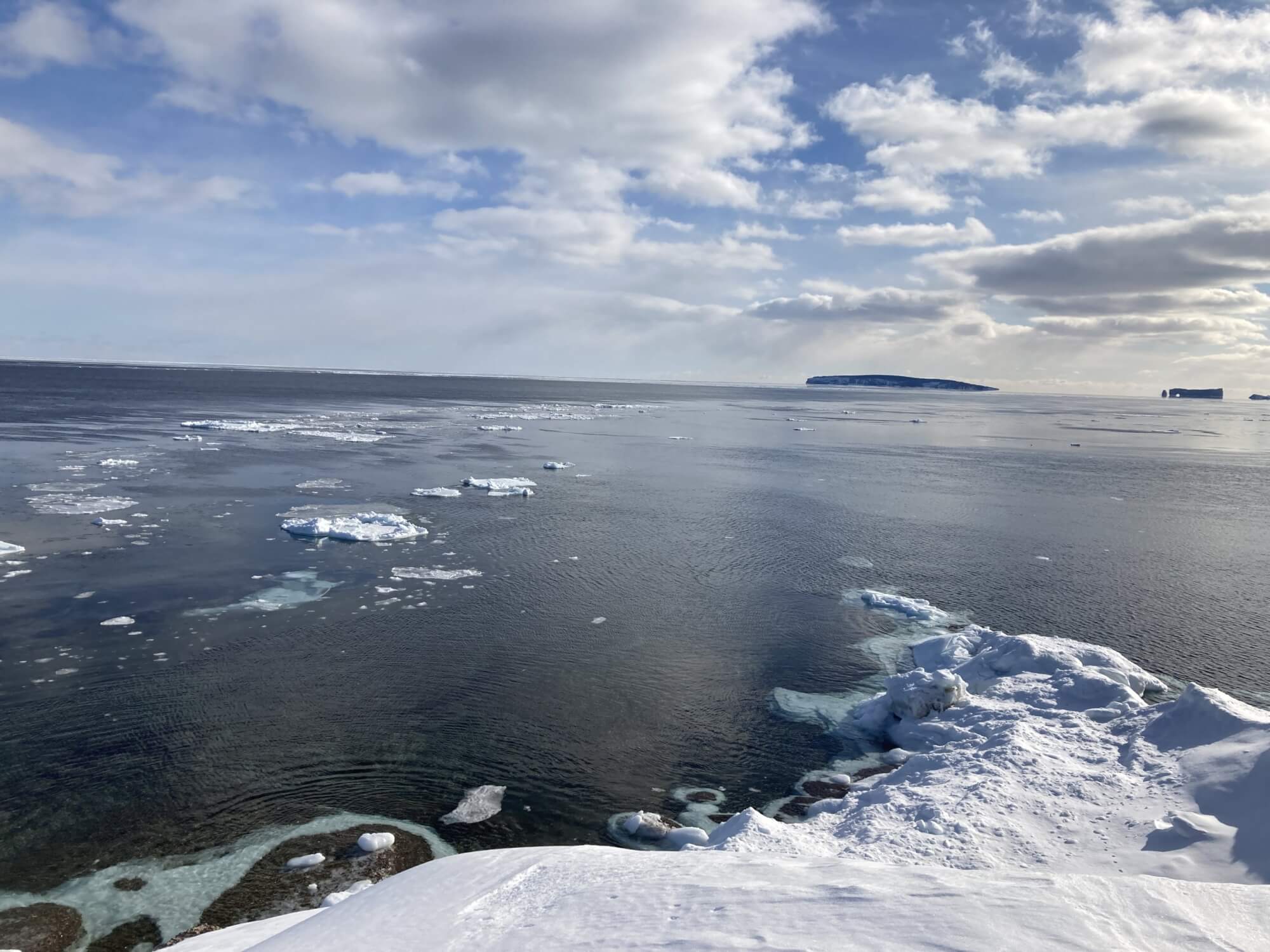When the north winds quiet down, the surface of the St. Lawrence ends up looking like a mirror, frozen solid by the polar cold and glistening in the sunlight. Between two drifting ice blocks suddenly appears a small black head with a pointed muzzle and thin whiskers. Last Sunday, posted at Cap de Bon-Désir in Les Bergeronnes, a GREMM employee saw a few solitary seals here and there, standing out against the deep blue and pristine white of the surrounding landscape.
A few days earlier, photographer Renaud Pintiaux also captured the silhouette of a few pinnipeds that had ventured into the Estuary. “Such a quiet morning. So beautiful,” he writes. In total, there are two harbour seals and three or four harp seals in Les Bergeronnes, and two more harbour seals in Les Escoumins. Renaud also got word of a large herd of seals in the area, far offshore.
On Monday, a captain in Les Escoumins notes the presence of a handful of large seals a few hundred metres from shore, but did not comment on the species. As for cetaceans, make no mistake about it: “The St. Lawrence is currently covered in fields of ice. Even if whales were there, they would be very difficult to spot,” explains the pilot.
Archive video of harbor seals on the ice of the St. Lawrence © Renaud Pintiaux
Here and elsewhere
Off the coast of Franquelin, ice is still very much present. “Right now, no whale would be able to enter the bay or the coves, but there are a few small groups of seals,” points out one observer. Farther downstream, in Baie Sainte-Marguerite between Port Cartier and Sept-Îles, the ice serves as a resting place for harp seals. GREMM received a report of a group of about fifty individuals off the coast of Gallix.
Ice is essential for harp seals, which need it to give birth and keep their pups safe until they are weaned. In recent years, the lack of ice has had an impact on the species’ behaviour, so this year’s ice cover represents for the seals a sort of return to normal!
In Gaspé Bay, it’s harbour seals that are squatting on the ice. On Thursday afternoon, a local resident was able to observe 68 representatives of this species sunning themselves in the middle of the bay. “And possibly a harp seal too, but given the distance, I can’t confirm that for sure,” confides this experienced observer.
What about grey seals? Currently in the peak of their pupping season, these large pinnipeds are probably concentrated in their breeding grounds, essentially on Sable Island and in southwestern Nova Scotia.
After spending the day at Pointe Saint-Pierre between Gaspé and Percé, a local observer who came up empty-handed exclaims: “Despite the bitter cold and ice, it was awesome!”
And while observers in Quebec are impatiently awaiting the arrival of spring and the first signs of whales, what are these giants up to? They’re in the middle of their breeding season in the temperate waters of the South! Currently in Mexico, our observer René Roy had the chance to film a rumble between two male humpbacks fighting over a female. A spectacle that we’ll never have the chance to see in the St. Lawrence, where whales are more focused on their bellies than on their hormones! This is why we wanted to share this video with you:
Have you seen a seal or a whale?
Share your observations and photos by writing to us at [email protected] or on our Facebook page









